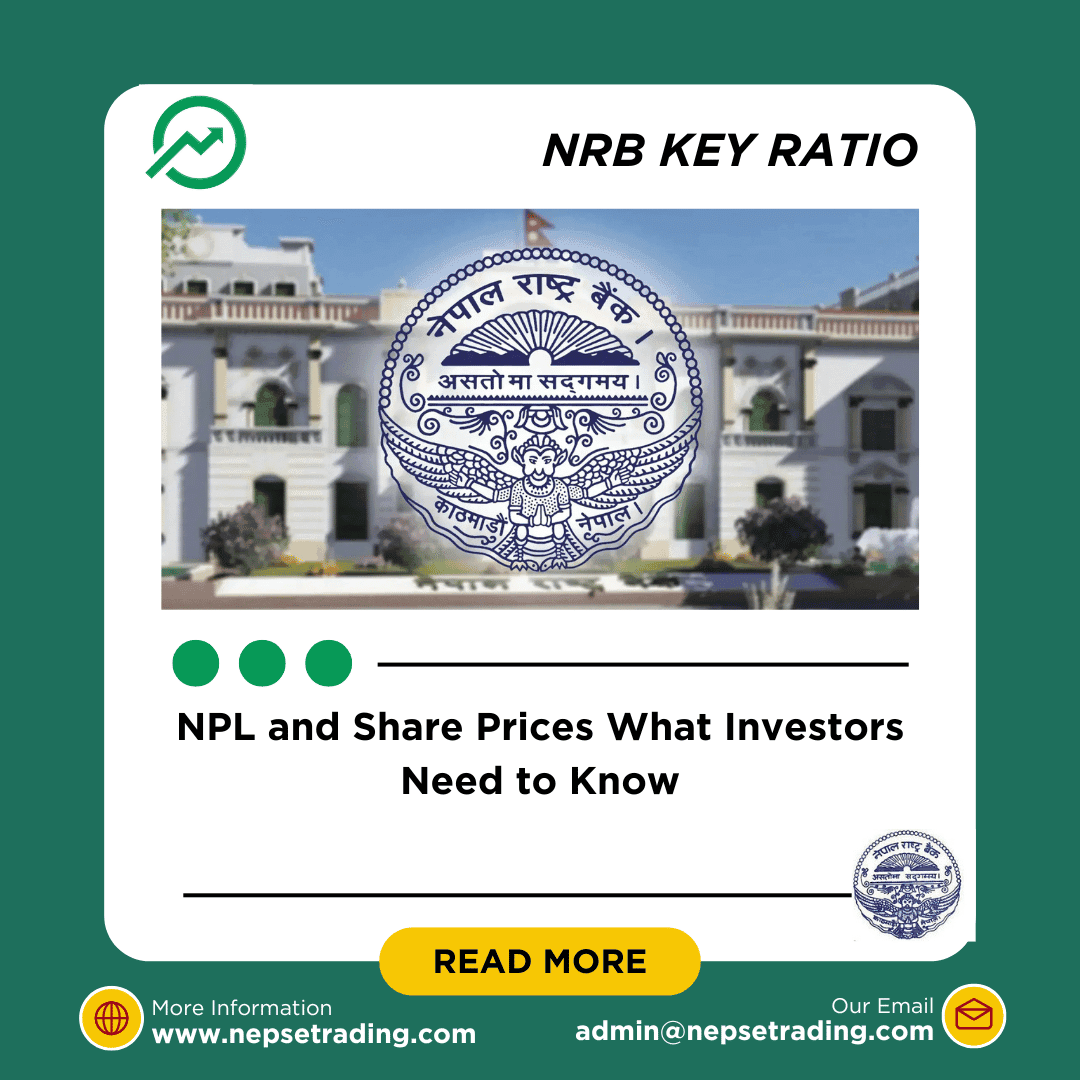By Sandeep Chaudhary
NPL and Share Prices What Investors Need to Know

Non-Performing Loans (NPLs) are one of the most critical indicators linking a bank’s financial health to its stock market valuation. In simple terms, a higher NPL ratio means more loans are not being repaid on time, which directly reduces profitability, raises provisioning requirements, and increases the risk of capital erosion. For NEPSE investors, this is a red flag because weaker asset quality often translates into lower dividends, declining market confidence, and subdued share prices.
From the Asadh 2082 (Mid-July 2025) NRB data, we see significant differences across banks. Agriculture Development Bank (ADBL) reported an NPL of 5.61%, while Prabhu Bank and NIC Asia Bank also showed relatively high levels above 6%, signaling stress in loan recovery. Investors in these banks should expect higher provisioning costs, which could suppress earnings per share (EPS) and weigh down share valuations. In contrast, Everest Bank (0.38%), Standard Chartered (1.47%), and Nepal SBI Bank (3.35%) maintained low NPLs, reflecting stronger loan book quality and, therefore, more stable dividend potential.
Historically in NEPSE, banks with lower NPLs tend to command premium valuations because they are seen as safer and more reliable dividend payers. On the other hand, those with persistently high NPLs experience sluggish price growth and, in some cases, declining investor confidence. This relationship is particularly important during times of economic slowdown, where NPLs rise sharply, dragging down stock performance.
For long-term investors, the message is clear: watch the NPL trend as closely as the P/E ratio or dividend announcements. Rising NPLs indicate potential risks in earnings sustainability, while falling NPLs often precede stronger financial performance and bullish stock momentum.









